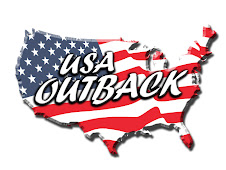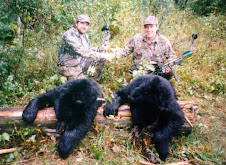View from elk camp-Spicer peak, Colorado

Indianapolis, Indiana- Once again it is that time of year when the piles of receipts that have accumulated in the glove box, the shoebox under the desk and also in the bulging grocery bag in the closet are all carefully brought together- to finally justify why they have been saved for the past 12 months. Somewhere in this mass of organized chaos is a receipt that proves to the IRS and your beloved that you did actually have a business dinner meeting last November on the second day of deer season. If only it were that easy to prove where the money has been spent on gun hunting, bow hunting and all other shooting sports- which is my point precisely.
Where has all the money been spent by sportsmen?
Back in 1937, a bill was sponsored by Senator Key Pittman of Nevada and Congressman A. Willis Robertson of Virginia and signed into law by President Franklin D. Roosevelt on Sept. 2, 1937. The Pittman-Robertson Act created a 10% excise tax on sporting arms and ammunition. A few years later the tax became 11%.
So where does all this money go?
The tens of millions of dollars generated by Pittman-Robertson each year were mandated to go back into state and local organizations to increase game populations, expand habitat and train hunters. As the money kept piling up, a repeal bill was drawn to relieve sportsmen from the financial burden of the excise tax. However, because dramatic results could be seen nationwide, sportsmen insisted on keeping the tax in place.
The generated revenues from Pittman-Robertson were placed in a special trust under the control of the U.S. Fish and Wildlife Service (USFWS) and were to be allotted to state wildlife conservation programs for wildlife restoration and to ensure the future of hunting sports. The trust was to be kept separate from the general fund, meaning the monies were not to be part of the accounted annual budget.
For years the Pittman-Robertson Act functioned soundly--generating $150 million in funds each year--and, more importantly, produced results. Numerous species including migratory birds (ducks and geese), elk, deer, antelope, wild turkey and many other species were rescued from the endangered list and are now not only surviving, but thriving. Pittman-Robertson was a rare legislative model for efficiency and a godsend for hunters and animals alike.
The Wildlife and Sport Fish Restoration Programs Improvement Act of 2000 precisely re-defines what USFWS can spend the excise taxes on and in what manner the monies can be spent. The NRA backed bill passed the House 423-2 and became law on Nov. 1, 2000.
Today, Pittman-Robertson is back on track, supplying wildlife with vast amounts of habitat, resources and practical ecological study, while supplying hunters with game to hunt and eat, thus ensuring necessary funds never run dry. America`s sportsmen contribute $3.5 million each day to wildlife conservation.
Now the National Park Service has a goal to eliminate any type of lead ammunition or fishing tackle on ALL national parks by the year 2010. I say TIME OUT- FOUL. Whenever a decision of this magnitude is made, you would think that it is based on scientific research, years of data, economic impact statements, etc., etc.. but NOOOOOoooooooaaa. .......
The restrictions, set to take effect by the end of 2010, were announced without regard to science or soliciting feedback from sportsmen’s groups. The ammo you bought for that elk hunt or even the lead-head jigs for that vacation trip to your local national park- better use them in 2009 because someone thinks that your gut pile will kill a condor- or the jig head you lost in the lake might be ingested by a loon- after 2010.
Do I smell a hidden agenda here?
Whatever it is- once again , sportsmen pay the price- we have the receipt.
Denny :(
www.usaoutbacktv.com










No comments:
Post a Comment